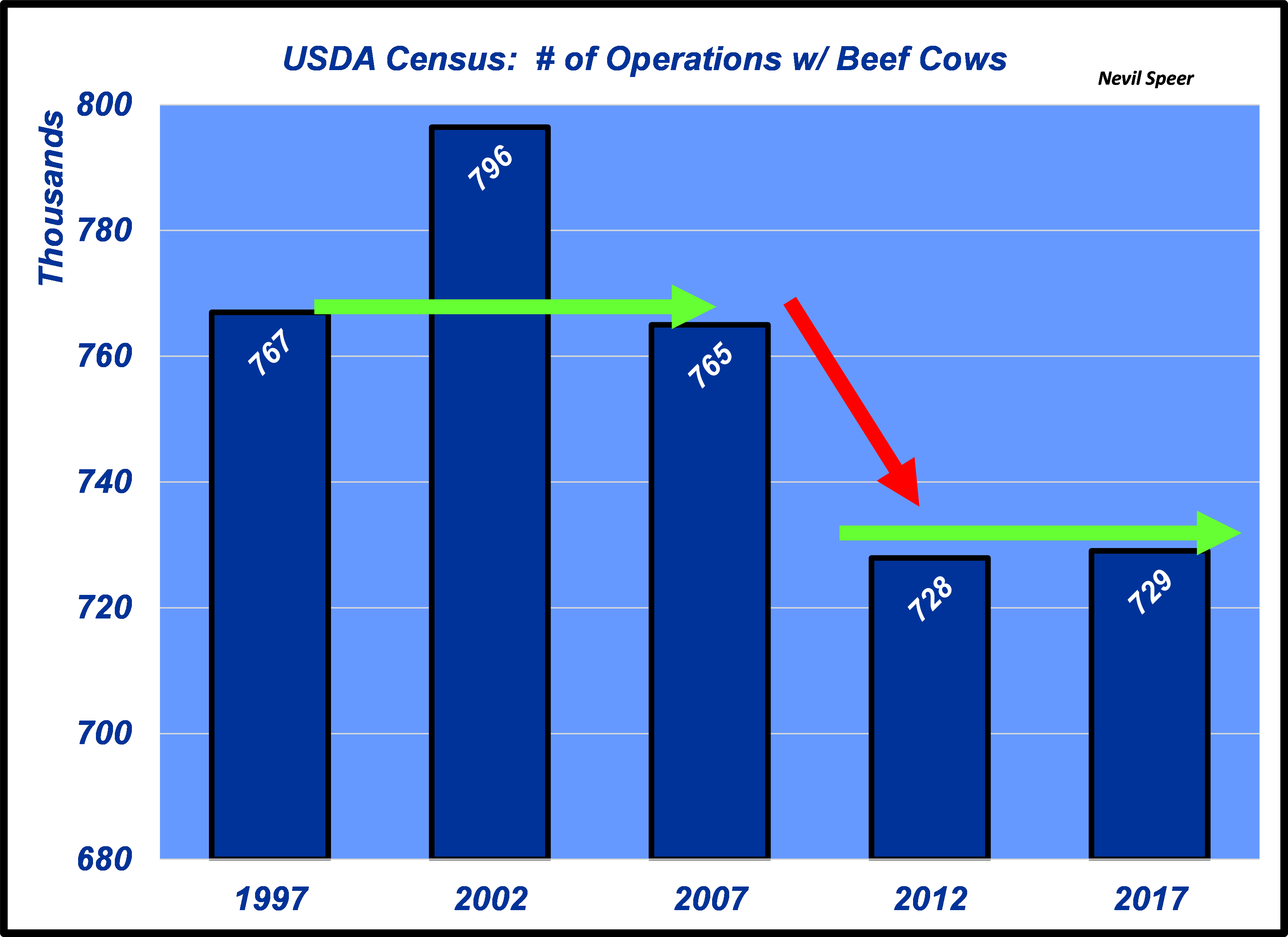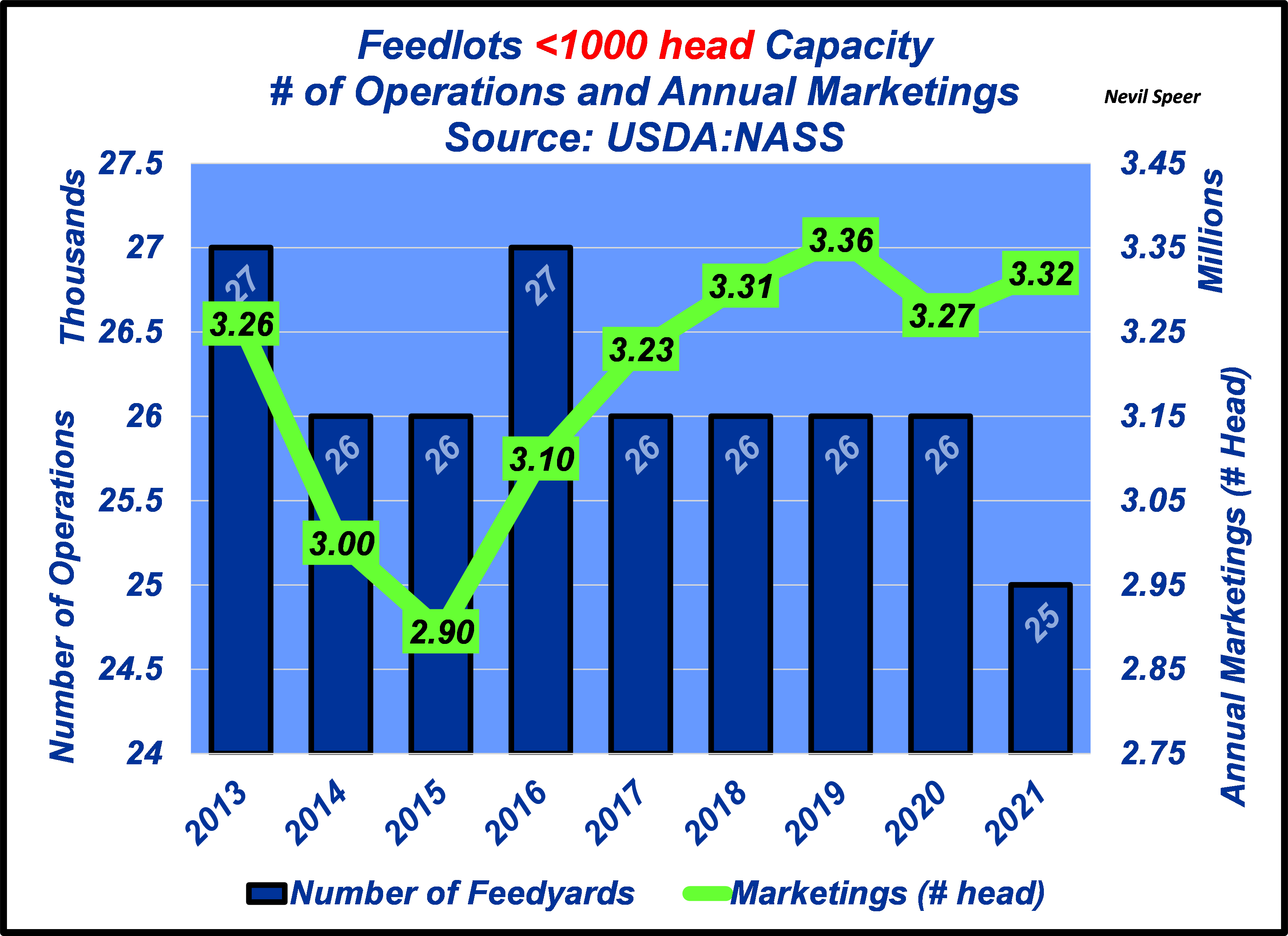Speer: Squishy Facts, Alarmist Narratives and Politicians

As election season ends, there’s never a shortage of candidates (on both sides) who play fast-and-loose with the facts and conflate every talking point. But it’s not just politicians – it happens in the beef industry, too. I was reminded of that after someone shared with me a recent guest editorial in the Kansas City Star. Let’s address some of the key statements.
One, the essay begins by stating: “In the last two decades, hundreds of thousands of U.S. cattle producers have gone out of business, and we are currently losing 40 operations per day by some estimates.” Full stop – we can’t know the current number (there’s no documentation) – 40 is completely random. However, we can know the broader trend because it is accurately documented.
The first graph outlines USDA census data. The number of beef cow operations in 1997 totaled nearly 767,000; 20 years later the number declines to only 729,000 – a difference of 38,000 (not “hundreds of thousands”). The decline equates to an annual rate of .25% (one-quarter-of-one-percent). At that rate, it’d require 400 years for every producer to leave the business. Note most of the difference across two-decades came between 2008 and 2012 (while COOL was in effect).

Two, the column then proclaims, “Just in the last two years, around 1,700 small feedlots run by independent family farmers were put out of business because of corporate consolidation.” Seemingly, this is a new favorite talking point which I addressed earlier in the year.
USDA’s count of feedlots with less than 1,000-head capacity is an estimate – it’s not a precise count. Second, it’s subject to revision. In fact, during the last six years of the new series (2016-to-2021), there’ve been three revisions (2016, 2017 and 2021) all of which were exactly 1,000 operations (underscoring estimate – not precision). Same principle as above – 1,700 is random. What’s more, these same feedyards (<1000 head) collectively marketed 50,000 head more in ’21 as compared to ’20 – and an additional 420,000 head compared to 2015! (see second graph)

Three, COOL. The editorial declares, “…cattle producers’ profit dropped from $518 per calf in 2014 to last year’s $125 per calf.” And further notes that, “Profit for producers in 2014 was helped by mandatory COOL – country-of-origin labeling…” However, compared to twenty years ago, most producers exited the business between 2008-and-2012; COOL was in effect four-out-of-those-five years. And marketings bottomed for smaller feedyards during COOL (2015). You can’t eat your cake and have it, too.
But let’s assess the profit assertion a little further. The third graph details LMIC annual returns ($/cow). The long-run average (except 2014 and 2015) equals ~$18/head. This year’s return is projected to be ~$60 (3X the average). In other words, 2014 and 2015 were the anomalies – largely driven by both strong beef demand and short supplies. That is, COOL was NOT the difference maker, else it would have benefitted producers between ’09-to-’12, too.
It’s also important to point out that average returns don’t reflect the distribution. That is, some producers are never profitable. And the differences are huge! For example, Kansas Farm Management Association data reveals that during the past ten years the average difference in returns between the top- and low-profit producers exceeds $600 per cow! And even in the best years the low-profit group failed to generate positive returns.

Last, the column ultimately asks, “…how many producers and small feedlots are going to go out of business before our elected representatives do something?” And includes a call-to-action: “We should call our representatives and senators to demand they support and pass the American Beef Labeling Act and the 50/14 Bill. Furthermore, they should break up the enormous meatpackers for the betterment of both the consumer and the producers.”
That’d be worthy of consideration, IF the case specifics were accurate…AND IF politicians could make a positive difference. BUT the details don’t line up. AND history proves the second generally just makes things worse: the first round of government intervention always leads to subsequent rounds of intervention.
Want to make producers better off? Squishy facts, alarmist narratives and politicians won’t get it done. Instead, the path to prosperity follows real data, critical thinking, and free enterprise.
Nevil Speer is an independent consultant based in Bowling Green, KY. The views and opinions expressed herein do not reflect, nor are associated with in any manner, any client or business relationship. He can be reached at nevil.speer@turkeytrack.biz.







